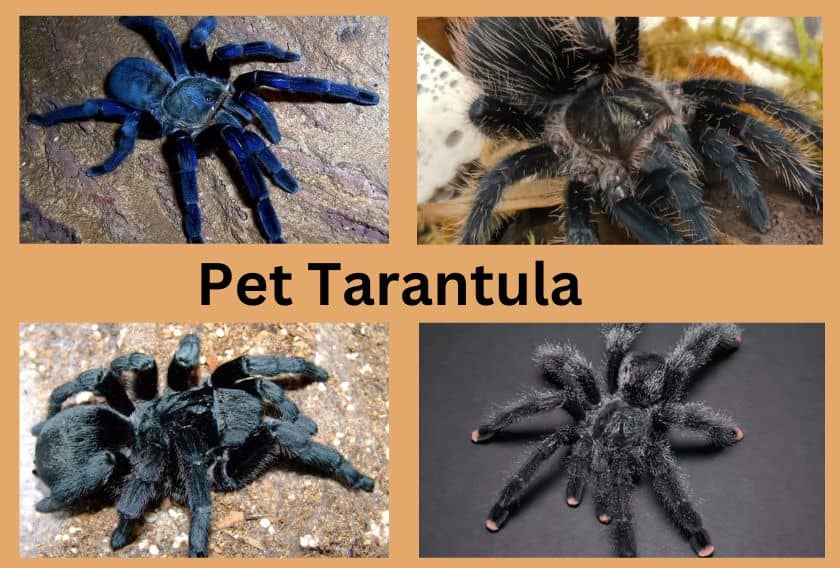Why Should I Consider a Pet Tarantula?
Pet tarantulas are one of the most captivating living beings on the planet, out of more than 1000 thousand species known. These are easy to keep as a pet as they are easy to care for and handle. These little creatures have captivated imaginations and sparked curiosity for centuries.
The tarantula is considered good and bad in the context of cherishing them as pet tarantula due to different opinions. Tarantulas are hairy spiders from the family Theraphosidae. The tarantula is an arthropod that relies on an exoskeleton for muscular support.
You can find tarantulas in various hues from black, blonde, beige, golden, and blue colors. These stunning creatures have 8 legs with a body length ranging from about 5cm to 11 cm with a leg span of 8cm to 30 cm.
Some of the largest tarantulas may weigh over 170g. For example, the Goliath bird eater (Theraphosa blondi) takes the size up to a dinner plate. The fangs of a tarantula face downwards as opposed to those of a true spider. The tarantulas have a long lifespan of 15 to 20 years depending upon the species and gender.
Their natural habitat includes grasslands, rainforests, deserts, scrubland, and mountains.
These spiders have become popular in the exotic pet trade. These are broadly classified under New World tarantulas and Old World tarantulas depending upon their temperament, behavior, venom potency, and location where these arachnids are found. If you are looking for an interactive pet then you might look to check for other options.
The Good Side – Keeping A Pet Tarantula
Tarantulas are fascinating creatures with so many attractive features which makes them wonderful pets. The advantages of keeping a tarantula can convince you to proceed to own one.
1. Low Maintenance Pet
The tarantulas are very low-maintenance pets for various reasons:
- No Daily Feeding: The tarantulas do not require to be fed daily. These small creatures need a very meagre amount of food and that too weekly or fortnightly depending upon the species, gender, or age.
- No Daily Cleaning Of Habitat: The tarantulas are very clean creatures and do not mess up the enclosure. Their feces is small and is absorbed in the substrate only. However, the spot cleaning of boluses or old exoskeletons is required as and when required.
- No Daily walks: In comparison to the most liked pets, dogs , the tarantulas do not need any special care such as taking it for a walk, playing with it or spending time.
- No Frequent Vet Visits: The tarantulas are robust creatures that can live easily without any special requirement of veterinary services.
- No Grooming Required: The tarantulas self groom themselves through a natural process, known as molting.
2. Small Enclosure Works Well
The tarantulas in general are small in size and hence their habitat should not be very large. As slings, these can reside easily even in a plastic container with air spaces. An adult tarantula can be easily housed in an enclosure of sizes up to 10 gallons to 15 gallons.
3. More Species To Choose From
There are more than 1000 species of tarantula of different colors, size, and temperaments known to us. The Chilean Rose tarantula, Curly hair tarantula, and Chaco Golden Knee are some of the docile and easy-to-care tarantulas.
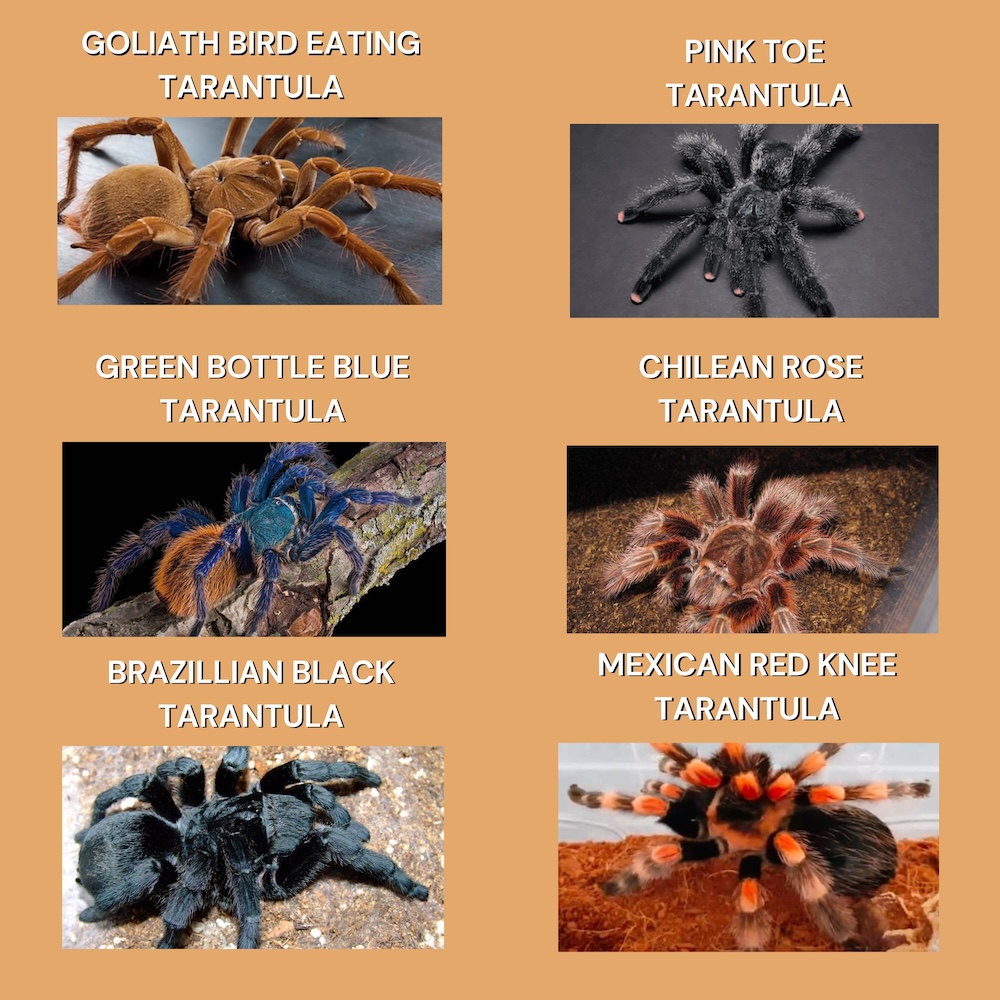
4. Inexpensive To Buy
The tarantulas are available at comparatively cheaper rates and you can own many instead of just one. These are available within the range of $50-$200.
5. Low Up Keep Cost
As the tarantulas do not require much food, care and grooming therefore the upkeep cost is quite less. Once you have set up the enclosure, you need not worry about hidden expenses.
6. Setting Up The Enclosure Is Interesting
It is very fascinating and different experience to set up the habitat of your eight -legged friend.
The Bad Side – Keeping a Pet Tarantula
Well there are certain points which you should consider before adopting a tarantula as a pet in your family.
1. No Cuddling
If you are looking for a pet that can be patted on its belly or cuddled with, then you should drop the idea of keeping tarantula as a pet.
2. Venomous Bite
All tarantulas are venomous and if they are under stress, these can bite or kick barbed hair. Though the venom toxic potency is quite low and it may be similar to that of a bee sting.
3. Raising its Live Feed
The tarantulas are nocturnal in nature and therefore enjoys its food when it is loaded with a live food. But this can be a challenge to some people as you will have to raise its feed also if you expand your hobby. The unappealing diet can also be a reason for developing aversion to tarantulas.
4. Legalities in Some territories
The tarantulas can not be kept as a pet in some of the territories of United States therefore you should check for state laws before proceeding to keep one.
5. Social Acceptance & Arachnophobia
There can be a negative impact on your social life as well if you choose to keep a tarantula. Some people show aversion to Tarantulas due to their fear factor and may show a reluctance in strengthening relationships.
6. Addictive
The hobby of tarantula keeping can be addictive if you start enjoying the thrill and excitement you are gaining by keeping a tarantula pet. As you advance in this hobby you will love to flaunt on the wide range of arachnids you own.
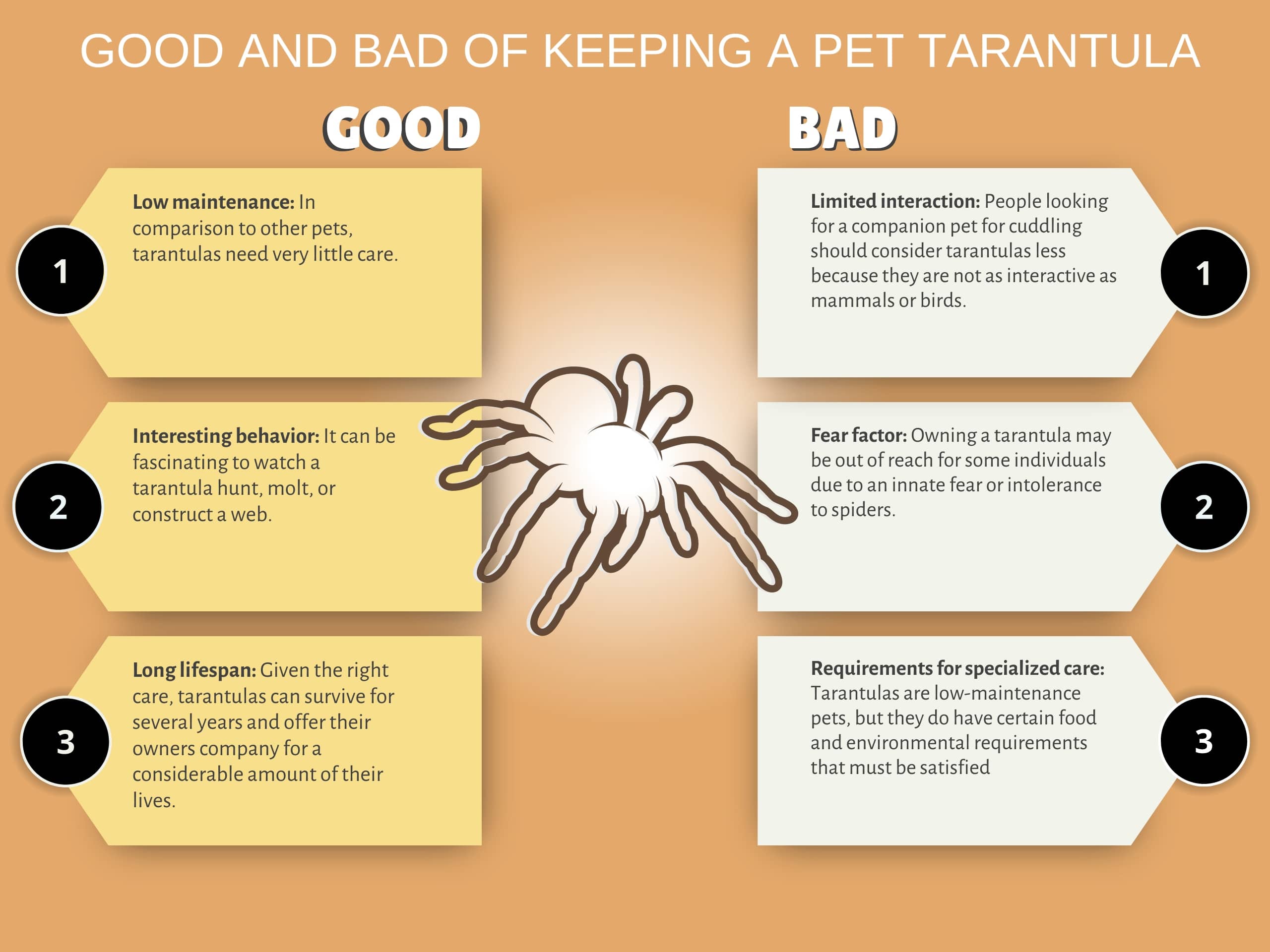
How To Care For A Pet Tarantula?
A pet tarantula can be taken care of by providing a suitable environment with the right temperature, humidity, and substrate. Additionally, proper feeding and handling are crucial aspects of their care routine. Moreover, a regular monitoring of these conditions is essential to ensure your tarantula’s well-being.
Tarantula Crib
Tarantulas require an enclosure that mimics their natural habitat. A glass terrarium or plastic container with secure ventilation is ideal.
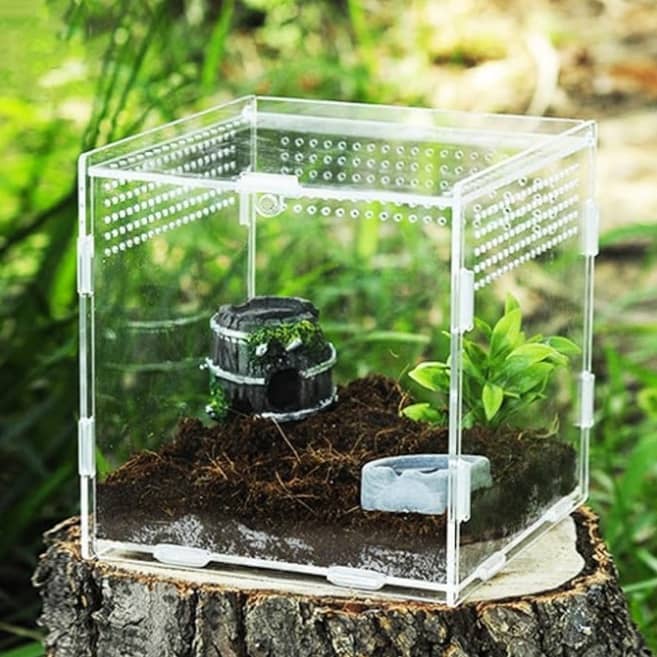
The enclosure should be spacious enough for the tarantula to move around comfortably with appropriate substrate requirements. For ground-dwelling species of tarantula, a general rule of thumb is the length of the enclosure should be nearly three times the spider’s leg span.
For tree-dwelling species the height of the tarantula cage should be approximately three times the leg span with an appropriate width so that you can place branches for it to climb on. You may need to rehouse it after molting.
Specific Substrate Requirements
Choosing the right substrate is essential for a tarantula’s health and well-being. A mixture of coconut fiber, peat moss, and vermiculite provides adequate moisture retention while allowing for burrowing.
The ideal temperature and humidity levels inside the enclosure provide a happy stay for your tarantula in captivity.
Food Habits Of A Pet Tarantula
The tarantulas are low-maintenance pets that are not to be fed frequently. The diet of a Tarantula mainly consist of insects such as crickets, mealworms, and roaches. These nocturnal creatures prefer live prey as it stimulates their natural hunting instincts.
 It is essential to provide appropriately sized prey items to your tarantula so that it is not stressed. In general, the size of the prey should be less than the size of your tarantula.
It is essential to provide appropriately sized prey items to your tarantula so that it is not stressed. In general, the size of the prey should be less than the size of your tarantula.
Handling A Pet Tarantula
Handling tarantulas may be desirable for some keepers while it can be a challenging task for others. Tarantulas, with their impressive size and sometimes intimidating appearance, often evoke fear and fascination in people. Once you overcome your arachnophobia, handling your tarantula can be a thrilling experience.
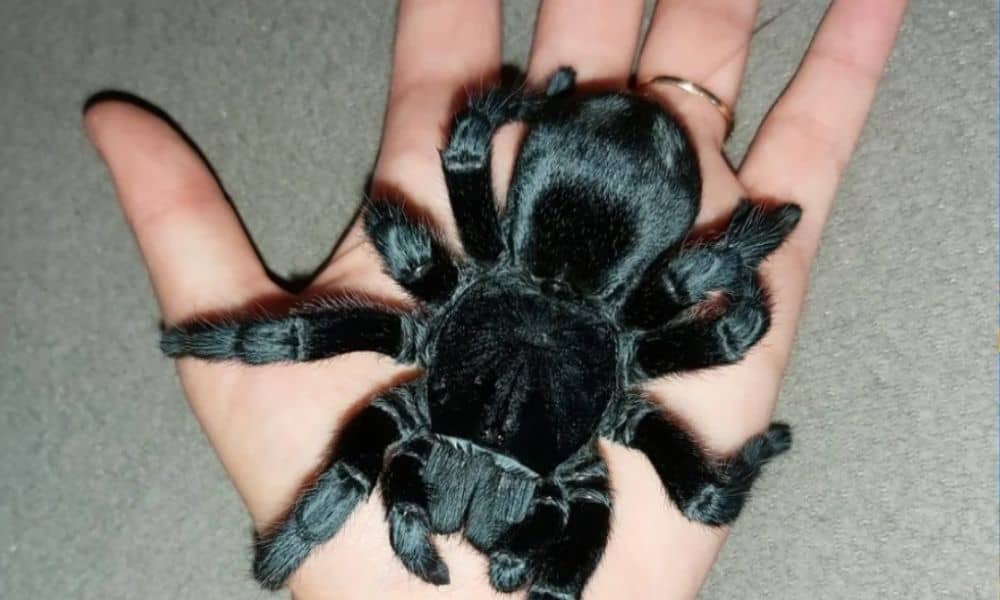
However, these creatures are not as dangerous as they may seem initially. In fact, with the right knowledge and precautions, handling tarantulas can be a safe and rewarding experience.
Let’s delve into the myths, facts, and precautions surrounding tarantula handling and provide guidance on how to do it safely and responsibly.
Best Beginner-Friendly Pet Tarantula Species
The tarantulas are docile creatures which are easily taken care of. You may require to know unique attributes of a tarantula before considering it to be kept as a pet.
1. Chilean Rose Tarantula
Chilean Rose Tarantula is also known as the Rose Hair Tarantula with the scientific name Grammostola Rosea. It is one of the most popular pet tarantula species due to its docile and calm nature.

Its velvety exoskeleton with hues ranging from light brown to pinkish red makes it more attractive and cute. In the world of arachnids, the Chilean Rose tarantula requires very little attention from the keeper as it needs to be fed less frequently.
2. Curly Hair Tarantula
The scientific name of Curly Hair Tarantula is Tlittocatl albopilosum, which is a captivating and low-maintenance exotic pet that brings a touch of the wild into the homes of arachnid enthusiasts. It is commonly known as Honduran Curly hair tarantula or simply Curly haired Tarantula.

The Honduran and Nicaraguan are of the same species; their origins are merely different. Of the two, the Nicaraguan is thought to have the purest bloodline. Since Hondurans are viewed as more of a “hobby form,” it’s possible that they were crossed-bred in the past.
3. Mexican Red Knee Tarantula
The Mexican Red Knee Tarantula is one of the most preferred pet tarantulas among exotic pet enthusiasts. The calm and non-aggressive nature and beautiful color pattern make it more adorable to first-time spider keepers.
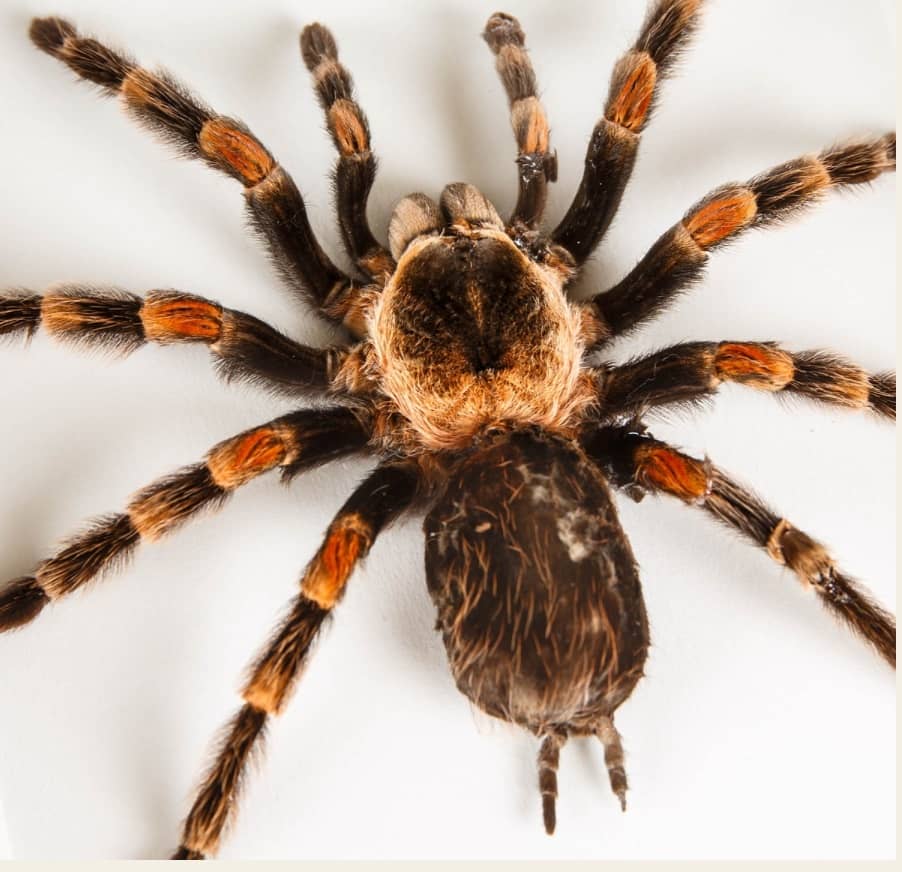
This stunning arachnid is known for its vibrant orange and black markings on its legs with a creamy beige carapace having a distinctive black square on it. This stunning arachnid possesses bilateral symmetry and is ectothermic.
4. The Brazilian Black Tarantula
The Brazilian black tarantula, known scientifically as Grammostola pulchra, is a fascinating species that captivates arachnid enthusiasts and pet owners alike. The Brazillian Black Tarantula, as its name suggests originates from the grasslands of Brazil.
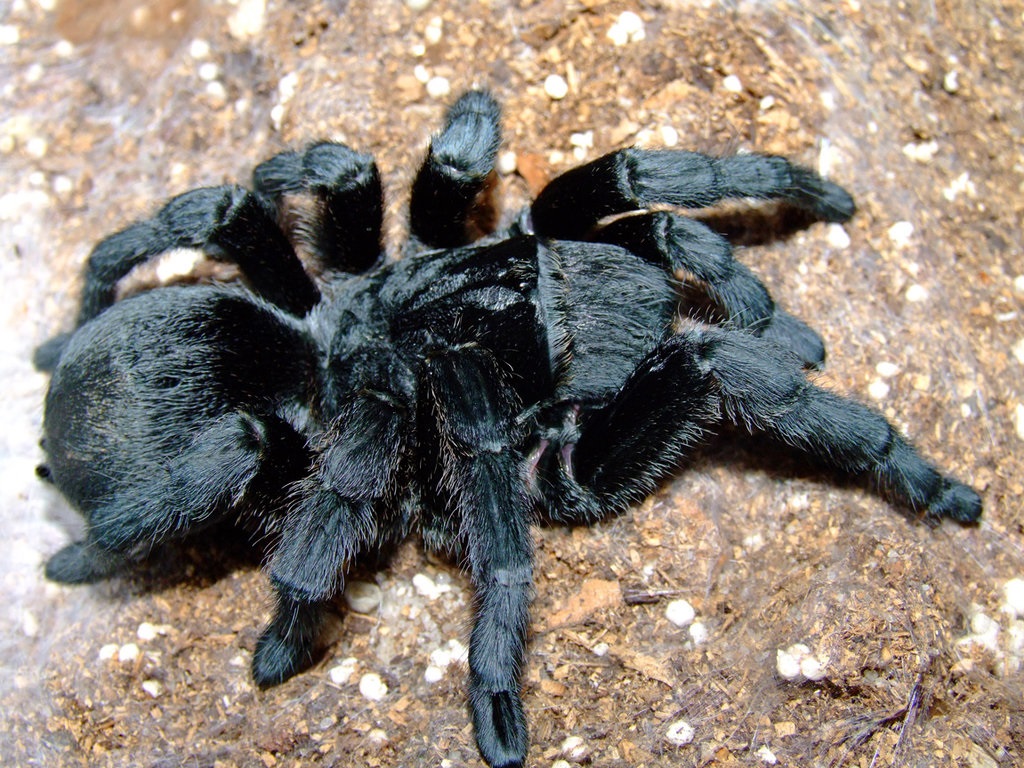
The Brazillian Black tarantula is also known as “The black labrador of tarantulas” due to its stunning black color and velvety skin. Another similar-looking species is Grammostola Quirogai, which is mainly found in Uruguay.
6. Zebra Tarantula
Found primarily in Central America, particularly in regions like Costa Rica, Honduras, and Guatemala (regions of Central America), these Zebra Tarantulas have captured amateur and seasoned arachnologists’ fascination.
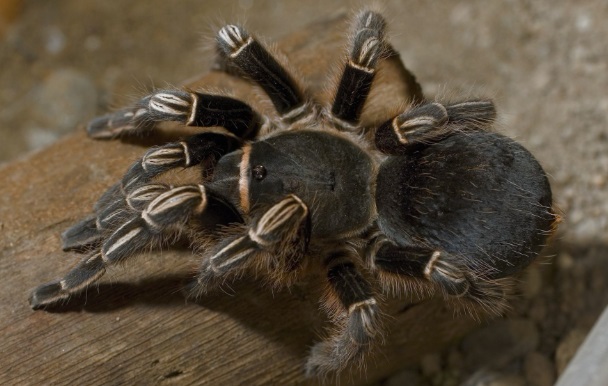
This New World Tarantula is a captivating creature that exemplifies the beauty and complexity of the natural world. From its striking appearance to its intriguing behaviors, there’s no denying the allure of these fascinating arachnids which you can find in black and brown colors.
7. The Chaco Golden Knee
The Chaco Golden Knee is one of the most popular tarantulas among novice keepers. The scientific name is Grammostola pulchripes while it is commonly known as Chaco Golden or Chaco Striped Knee. It exhibits a multitude of colors such as brown, black, yellow, and golden colors on its body.
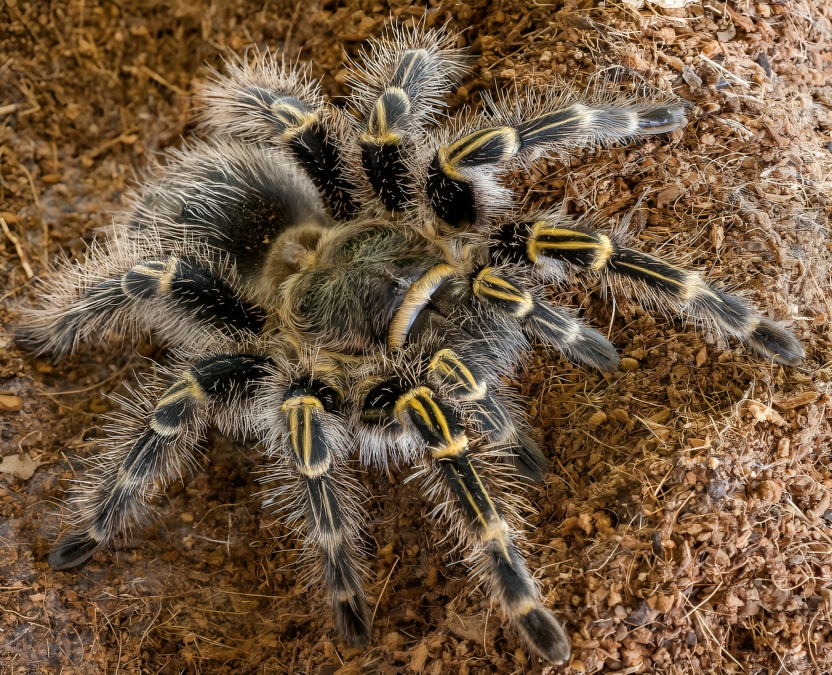
Originating from the dense forests of South America, particularly in regions like Paraguay, Uraguay, and Argentina, the Chaco Golden Knee Tarantula is a terrestrial creature, meaning it prefers to dwell in shrubs and surfaces.
8. Pink-toe Tarantula
The scientific name of this species is Avicularia avicularia. The other names are Guyana Pink Toe and South America Pink Toe Spiders. This tarantula is native to Venezuela, Guyana, Suriname, French Guiana, Trinidad and Tobago, Peru, Bolivia and Brazil.
The pink-toe tarantula thrives amidst lush vegetation and humid climates of these regions.
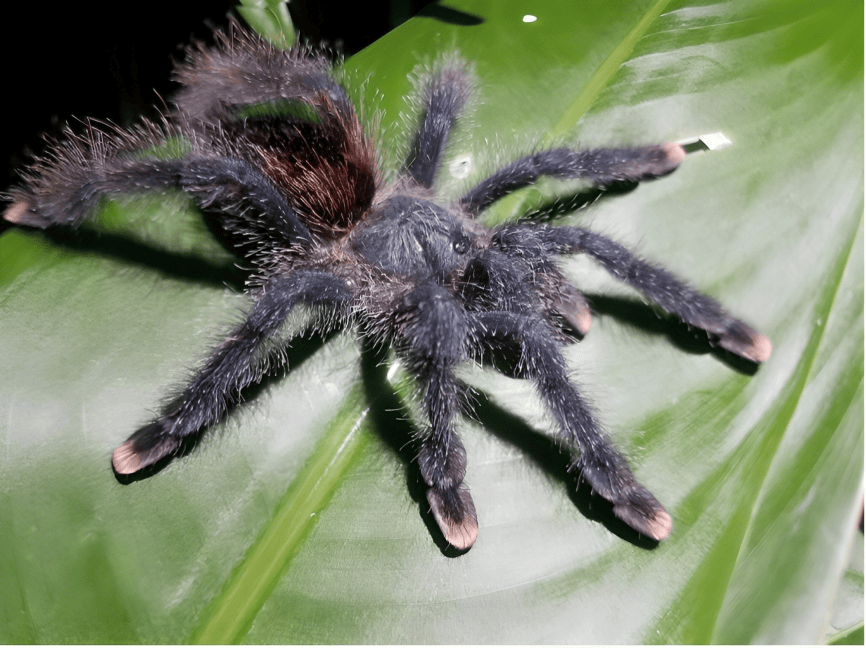
These arboreal tarantulas are skilled climbers, often found clinging to tree branches or hiding in foliage to avoid predators and hunt prey.
Common Health Problems
The tarantulas are robust creatures with good health. However, they may face some issues if they are not properly taken care of. For example, a shrunken abdomen indicates that your tarantula is dehydrated. Loss of limb is also observed if a tarantula undergoes a bad molt. They may acquire oral nematodes or mites through a substrate harnessed from a local garden.
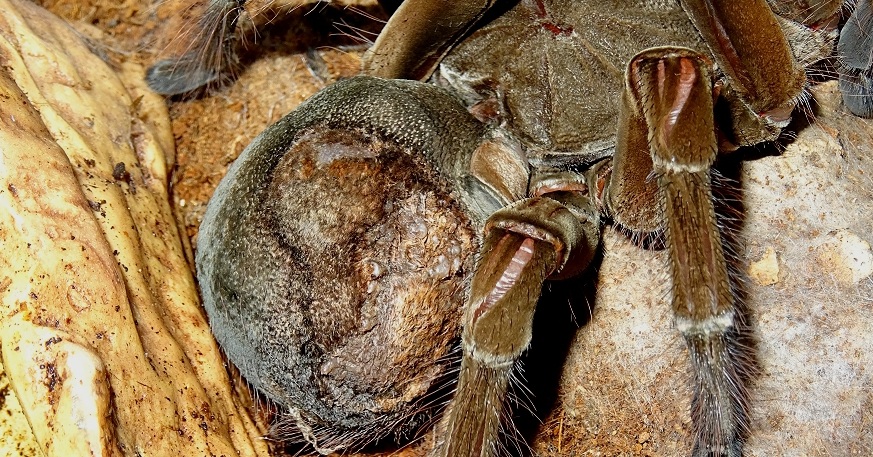
Buying Or Adopting A Tarantula
The tarantulas can be available at some specialized exotic pet shops near you but you can also approach some authentic breeders or rescue groups. You can get details about the species, gender, age, overall health, and state of that tarantula.
- Fear Not Tarantulas: A specialized retailer offering a diverse selection of tarantulas and related supplies, dedicated to providing quality care information and support for tarantula enthusiasts.
- Backwater Reptiles: A comprehensive online destination for reptile enthusiasts, featuring a wide range of tarantulas for sale along with other reptiles, amphibians, and supplies.
- Petco: A leading pet retail chain offering a variety of products and services, including a selection of tarantulas for sale alongside other pets and pet supplies.
- Beasley Exotics: An exotic pet store catering to enthusiasts with a selection of unique animals, including tarantulas, reptiles, amphibians, and supplies for their care.
- Great Basin Serpentarium: A specialized facility offering an array of exotic reptiles and invertebrates for sale, including tarantulas, along with educational resources and outreach programs for reptile enthusiasts.
Interesting Facts About Tarantula
- Tarantulas are spiders and spiders are arachnids.
- There are more than 1000 species of tarantula with sizes ranging from a fingernail to a dinner plate.
- The fangs of a tarantula face downwards, which is opposite to that of a true spiders.
- Despite their fearsome appearance, tarantulas are relatively harmless to humans, with venom that is typically no more potent than a bee sting.
- Most of the tarantulas are docile but some species of tarantulas are capable of flicking urticating hairs from their abdomens as a defense mechanism against predators.
- Tarantulas are nocturnal creatures, preferring to hunt and explore their surroundings under the cover of darkness.
- Tarantulas have poor eyesight and rely primarily on vibrations and chemical cues to navigate their environment and locate prey.
- Certain species of tarantulas are arboreal, meaning they spend most of their time in trees or other elevated areas.
- Thailand Zebra leg tarantula is an edible tarantula. It is a cuisine in Cambodia and Thailand.
- Tarantulas use silk for various purposes, including building burrows, lining their nests, and creating egg sacs.
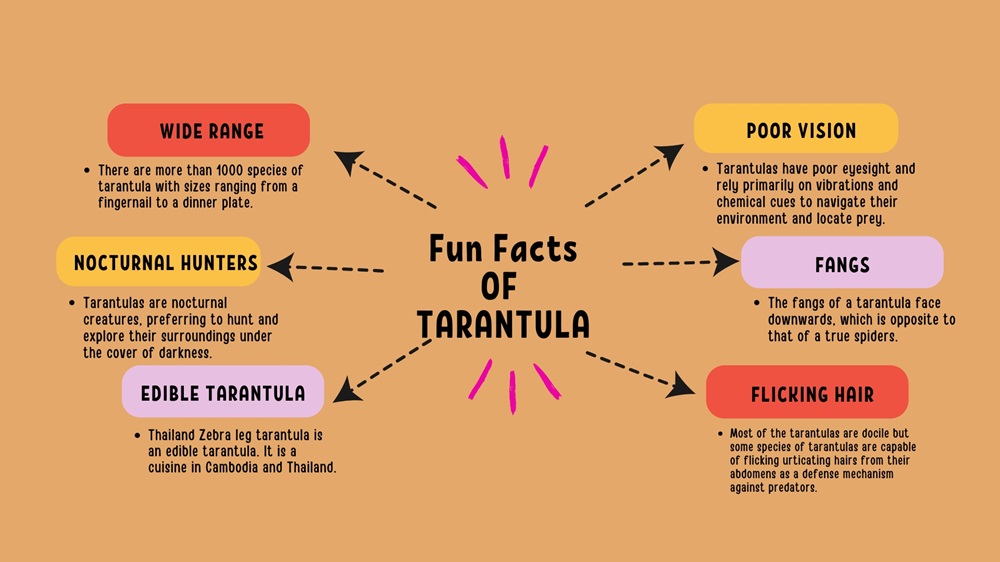
There is No Such Thing as a “Pet Tarantula”
Some people think it is not wise to capture a tarantula from its natural habitat and force them to live in an environment that doesn’t meet their needs. This can lead to stress, health issues, and behavioral problems in them. The local pet stores and breeders are the main players in the pet- market who capture poor animals from their natural environment and sell them to anyone who pays for them.
There is no “Ethical Breeding” of any animal and we all should break this cycle of sale and purchase. According to these organizations, we all should take a step to break the demand and supply chain so that we can stop animal suffering in the pet trade.
News and Other
- Two new species of tarantula were discovered in the Andes Mountains – Checkout Here.
- ” New electric blue Tarantula ,Jewel of the forest” is found in Thailand – CheckoutHere.
Conclusion
In conclusion, keeping a small pet tarantula can be a rewarding experience for enthusiasts willing to appreciate these fascinating creatures on their terms.
With proper care, handling, and attention to their unique needs, tarantulas can thrive in captivity and provide endless opportunities for learning and observation. Whether you’re a seasoned arachnid enthusiast or a curious beginner, a pet tarantula is sure to add an element of wonder to your life.

